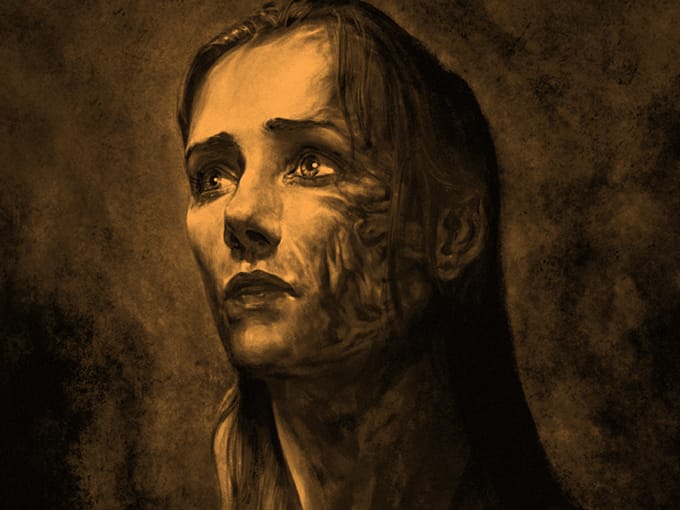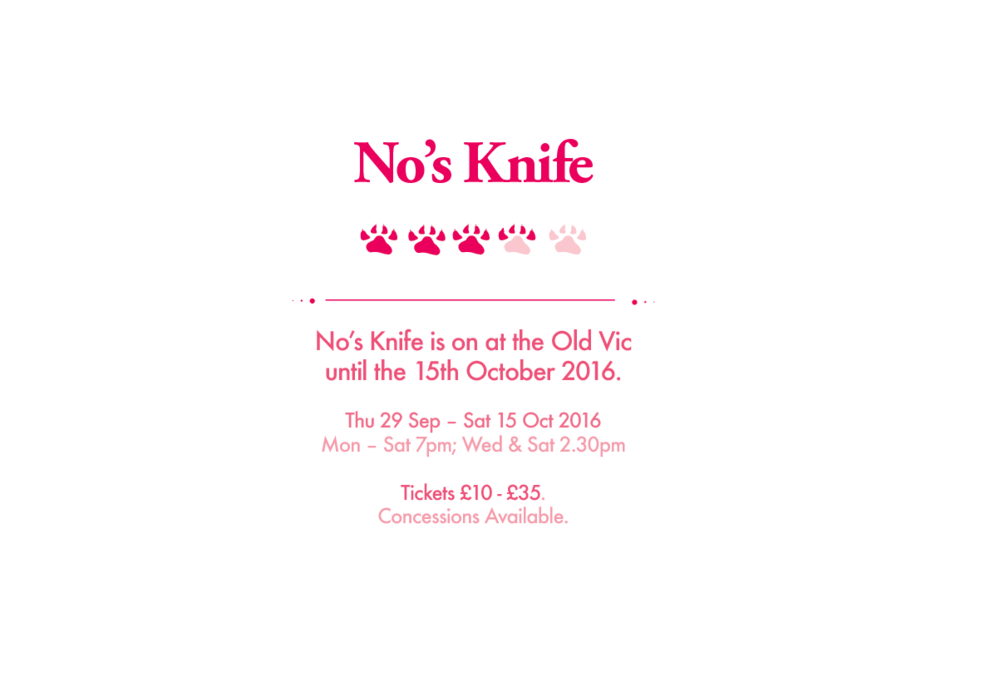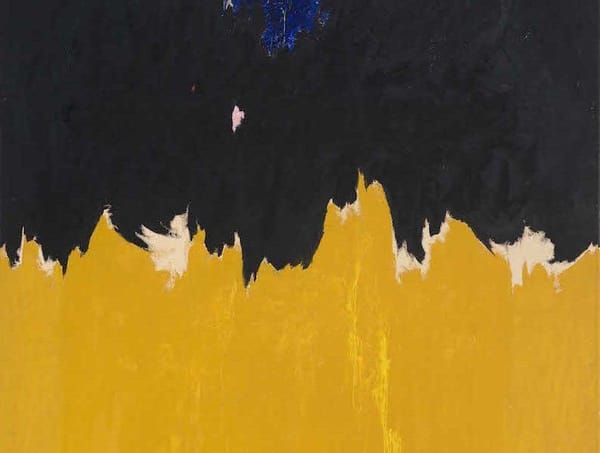No’s Knife

No’s Knife is one of the first in an expansive programme of experimental, daring, and somewhat unusual productions at the Old Vic, under the stewardship of new Artistic Director, Matthew Warchus. It’s a 74 minute, one Act, four scene, one-woman performance by Lisa Dwan (who also co-directs with Joe Murphy), based on Samuel Beckett’s Texts for Nothing. A selection of short stories and pieces, Texts for Nothing (first published, in English, in 1967) has, until now, never been dramatized but was given the go ahead by Warchus upon being pitched the play by Dwan, whose previous work on Beckett’s Not I, Footfalls, and Rockaby, make her an assured choice for leading lady.
The play opens with a selection of projected visuals of Dwan or, if you will, the Voice of No’s Knife, before the character appears in the flesh. She is standing on a giant vertical square slab, the ‘bog’ in which the story takes place, suspended above the floor, with the only lighting directed towards her. The intended effect is to see the character as if she is laying “down in the hole the centuries have dug”, and it works remarkably well; tunnel vision soon kicks in and her wraith-like face becomes the sole focus. It’s a remarkable example of how a simple set can create the most perfect sense of place. Our protagonist does not move much during the play, even when she is free to roam the stage in latter scenes; however, when each of the production’s 74 minutes is filled quite literally to the brim with the sound of the Voice, it matters little.
Ultimately, No’s Knife is good, but it thinks it is very good
Ultimately, No’s Knife is good, but it thinks it is very good. In the run up to the opening night Dwan has talked a lot about the relevance of this piece to modern Europe. It was written by Beckett in the aftermath of World War II when, to quote the performer, “Europe was trying to come to terms with herself as she is again now”. At the beginning of the fourth scene the voice ponders (the heavily advertised line in the run up to the show’s opening), “Where would I go, if I could go, who would I be, if I could be, who says this, saying it’s me?”, which Dwan herself has compared to the loss of life in the current refugee crisis. Similarly, she has talked about “the hole centuries have dug” and its connotations for women in the 21st century. Yet, despite these observations and brilliant lines (the wonderfully Shakespearean “I’ll sprout a head, at last, all my own, in which to brew poisons worthy of me”, stands out),
they can be so easy to miss in the relentlessness of No’s Knife. So what to do? See the play twice? Thrice? Your enjoyment of the production would certainly benefit from it but this is theatre, not film, and tickets at the Old Vic are expensive enough for one viewing, let alone two or three. Brushing up on Beckett before diving head first into the production is one way of getting the most out of your hour, and is highly recommended. The best way to enjoy No’s Knife, however, is to simply relax, and enjoy a marvellously emotional, and funny, acting tour de force. Just, please, try not to take the play as seriously as Dwan and Murphy would want you to.









